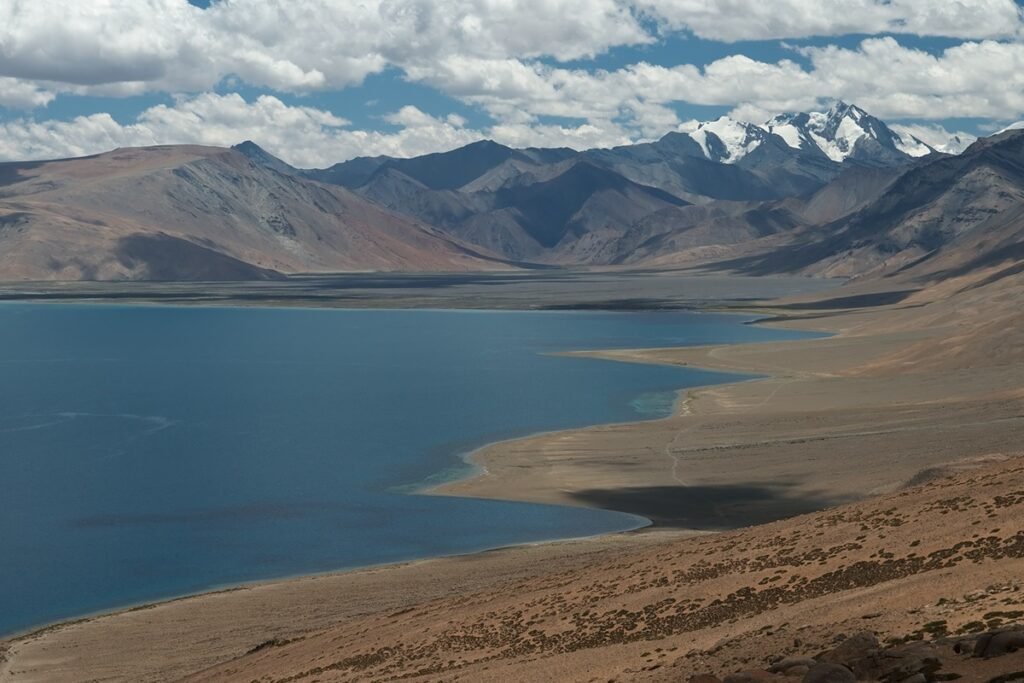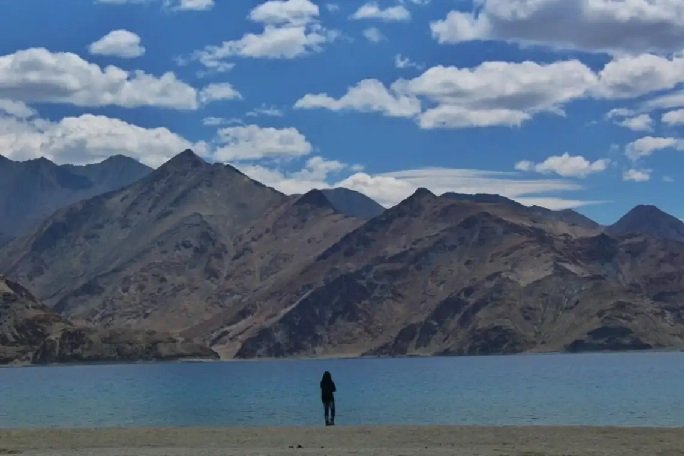There are few places in India that feel as far removed from the rest of the country as Ladakh. The moment your flight descends into Leh, it is clear that you have entered a different world. The mountains are bare. The air is thin. The sky stretches wide, with barely a cloud in sight. There is a quiet here that settles in fast, as if the place itself insists you slow down.
Travel in Ladakh is not always easy. Roads are rough, weather is unpredictable, and distances are long. But the rewards are worth the effort. You find yourself in landscapes that belong more to silence than to speech. And slowly, as the body adjusts to the altitude, the mind begins to adjust to the pace.
Starting in Leh

Most trips begin in Leh, a small town that sits at just over 11,500 feet. It is not a place to rush through. A couple of days are needed for acclimatisation, and those first 48 hours shape the rest of your journey. Wander through the main bazaar, sip butter tea at a local café, visit Shanti Stupa at sunset. Let the altitude settle.
From Leh, it is easy to explore some of the best tours in Ladakh. A day trip west takes you to Alchi and Likir, where ancient monasteries hold centuries-old paintings and statues. Further out lies Lamayuru, a moonscape of ridged rock and quiet monasteries. Each bend in the road brings something unexpected: a row of prayer flags, a frozen stream, a shepherd with a weathered face.
Trekking the Valleys

For many travellers, Ladakh means trekking. This page presents the top treks in Ladakh, and the variety is impressive. From gentle walks through villages to demanding high-altitude crossings, there is something for every pace.
The Markha Valley trek is one of the most popular, and for good reason. It passes through river valleys, remote settlements, and high passes, offering both cultural insight and dramatic views. Another classic route is from Rumtse to Tso Moriri, a wilder and more remote path where you are more likely to see wild asses than people. For those who want something shorter, the trail from Phyang to Hunder in the Nubra Valley provides a compact but rewarding experience, with vast mountain views and access to the unique sand dunes of Nubra.
Monasteries and Roads

Religion is woven into the land here. Monasteries crown many of the hills, often reached by steep, narrow tracks. Thiksey, Hemis and Diskit are among the most visited, each with its own rhythm of prayer, ritual and colour. The sound of a drum or conch echoing in the morning air is not something you forget.
Much of Ladakh is reached by road. Drives are long and sometimes difficult, but rarely dull. The road from Leh to Nubra crosses Khardung La, once claimed to be the highest motorable pass in the world. The descent into Nubra is dramatic, with the landscape shifting from cold mountains to wide valleys with sand dunes, yaks and double-humped camels.
Another long but beautiful route is from Leh to Pangong Lake, now famous but still breathtaking. The lake’s shifting shades of blue, surrounded by arid cliffs and icy peaks, are hard to capture in photos or words.
The Changthang and Tso Moriri Lake

If you want to feel the true openness of Ladakh, head towards the Changthang Plateau. This is the land of the nomads, where small settlements break the silence of high-altitude plains. Tso Moriri, the high-altitude lake in this region, feels like a different world. Fewer visitors make it here compared to Pangong, but for those who do, the quietness is part of the appeal. There is no phone signal, few distractions, and the nights are still and cold.
Not Just a Summer Escape
Ladakh is often seen as a summer destination, a way to escape the heat of the plains. But it is more than that. It is a place that asks for presence. Whether you are on a motorcycle, in a shared taxi, or on foot, there is something about the scale of the place that makes the usual noise of life fall away.
Winters are harsh and few visitors come, but festivals continue in the monasteries. Monks dance in masked rituals that speak to old stories and deep traditions. The Hemis festival in summer draws large crowds, but smaller events in places like Matho and Spituk offer a more intimate view into Ladakhi culture.
The Slow Road
Many choose to leave Ladakh the same way they arrived, by air. But for those with time, the road to Manali is worth the extra days. It crosses some of the highest passes in India, skims along valleys and cliffs, and moves through terrain that shifts with every hour. It is not an easy ride, but it offers one of the most memorable overland journeys in the country.
Ladakh is not about checking off a list. It is about long silences, wide skies and small moments. A shepherd’s wave. A monk lighting lamps in a cold chapel. A tent pitched against a wind that never seems to stop. It stays with you, long after the trip ends.
Blog:
